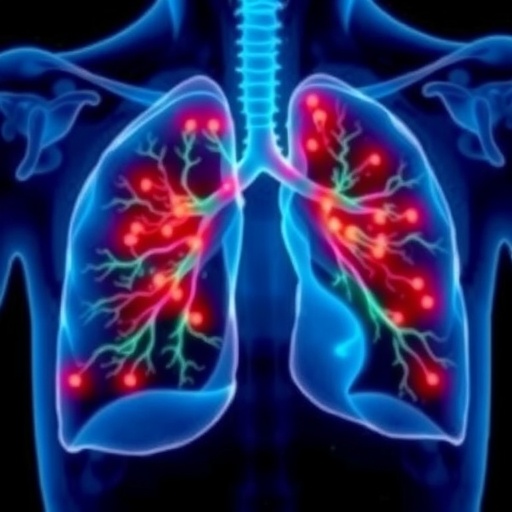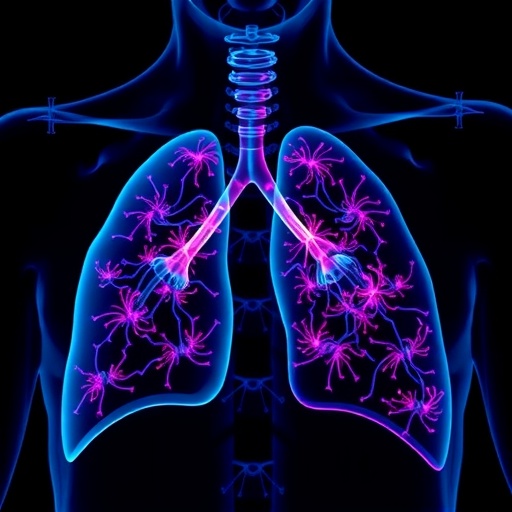Credit: Christoph Rischpler
RESTON, VA – Prostate-specific membrane antigen (PSMA) positron emission tomography (PET) imaging has become a popular method for determining the stage of a patient's prostate cancer. However, researchers have identified a major pitfall in this imaging technique and are cautioning medical professionals to be aware of the potential for misdiagnosis when relying solely on PSMA PET. The study is featured in The Journal of Nuclear Medicine's September issue.
PSMA is a highly expressive enzyme in prostate cancer cells and metastases, which makes it a very useful target for imaging, allowing physicians to more easily diagnose the cancer and determine best treatments. However, past studies have noted that some benign tissues also show increased PSMA expression and could potentially be confused with lymph node metastases. These tissues include parts of the kidney, bowels, salivary glands and ganglia along the sympathetic trunk. The result could be a misdiagnosis and unnecessary change in therapy regimen.
"It is important that nuclear medicine physicians be aware of this pitfall, as the interpretation of PSMA PET scans may have a substantial impact on therapy guidance," said Christoph Rischpler, MD, in the department of nuclear medicine at the Technical University of Munich in Germany.
The study focused on PSMA-ligand uptake in cervical, coeliac and sacral ganglia. The researchers analyzed 407 patients and compared the findings to adjacent lymph node metastases. They found that the uptake was above background levels in 401 patients, or 98.5 percent of participants.
Despite these findings, the researchers urge medical professionals not to completely abandon PSMA PET imaging. Instead, they suggest, nuclear medicine physicians should analyze PSMA-ligand uptake in conjunction with exact localization and configuration of the respective lesion to differentiate expressive ganglia from lymph node metastases and to avoid misinterpretation.
Rischpler stated, "We hope that an increased awareness among nuclear medicine physicians of this important pitfall helps to increase diagnostic accuracy and improve therapy guidance, preventing unnecessary procedures for prostate cancer patients."
Authors of "68GA-PSMA-HBED-CC Uptake in Cervical, Coeliac and Sacral Ganglia as an Important Pitfall in Prostate Cancer PET Imaging" include Christoph Rischpler, Anna M. Schlitter, Karina Knorr, Markus Schwaiger, Jurgen Gschwend, Tobias Maurer and Matthias Eiber, Technical University of Munich, Germany; Teresa I. Beck and Philipp T. Meyer, University of Freiburg, Germany; and Shozo Okamoto, Technical University of Munich and Hokkaido University Graduate School of Medicine, Japan.
###
Please visit the SNMMI Media Center to view the PDF of the study, including images, and more information about molecular imaging and personalized medicine. To schedule an interview with the researchers, please contact Sarah Schlieder at 703-652-6773 or [email protected]. Current and past issues of The Journal of Nuclear Medicine can be found online at http://jnm.snmjournals.org.
About the Society of Nuclear Medicine and Molecular Imaging
The Society of Nuclear Medicine and Molecular Imaging (SNMMI) is an international scientific and medical organization dedicated to advancing nuclear medicine and molecular imaging, vital elements of precision medicine that allow diagnosis and treatment to be tailored to individual patients in order to achieve the best possible outcomes.
SNMMI's more than 17,000 members set the standard for molecular imaging and nuclear medicine practice by creating guidelines, sharing information through journals and meetings and leading advocacy on key issues that affect molecular imaging and therapy research and practice. For more information, visit http://www.snmmi.org.
###
Media Contact
Sarah Schlieder
[email protected]
@SNM_MI
http://www.snm.org
Original Source
http://www.snmmi.org/NewsPublications/NewsDetail.aspx?ItemNumber=29956 http://dx.doi.org/10.2967/jnumed.117.204677




